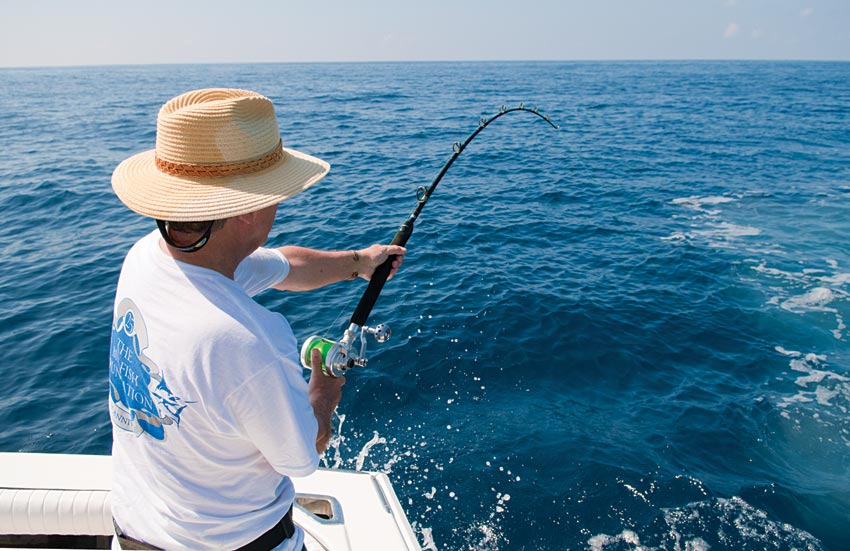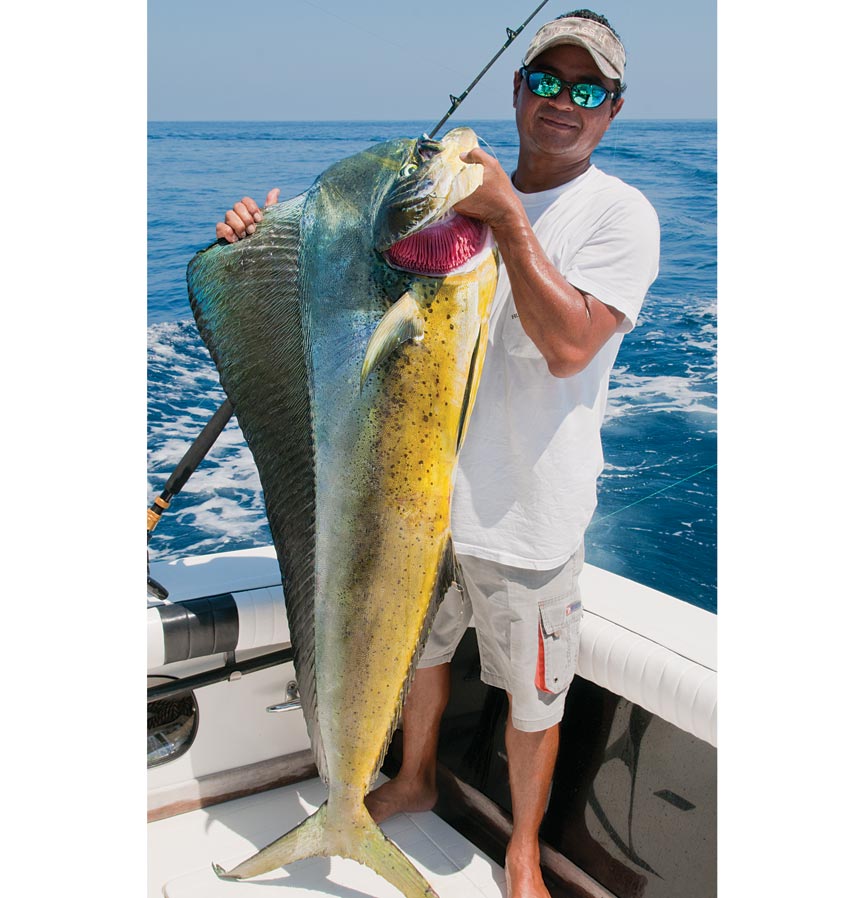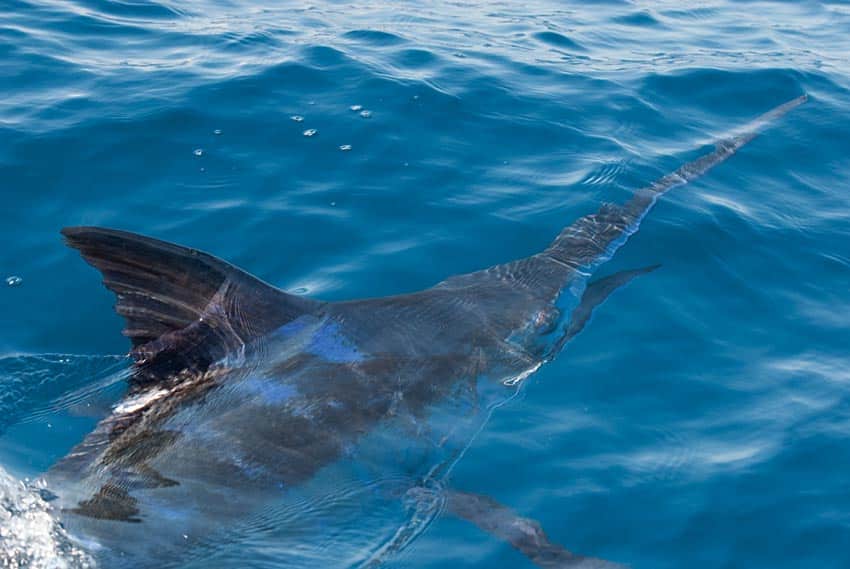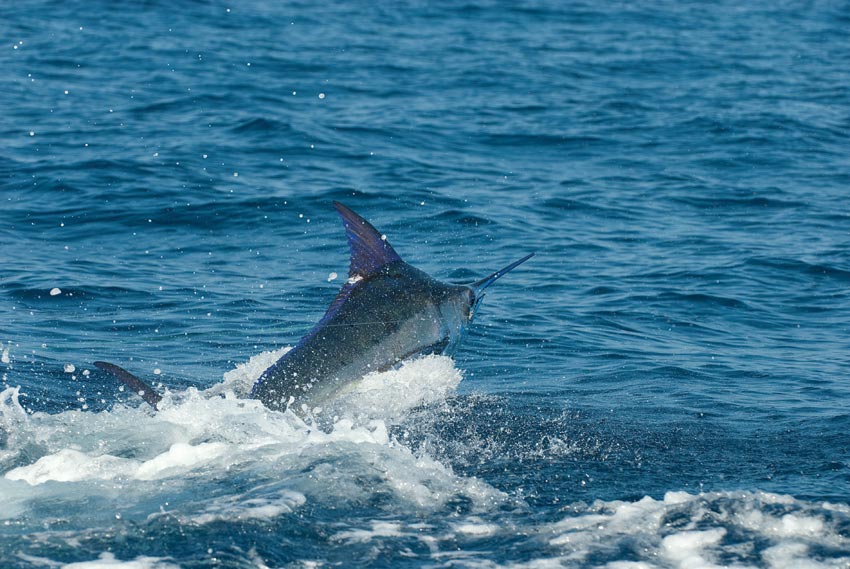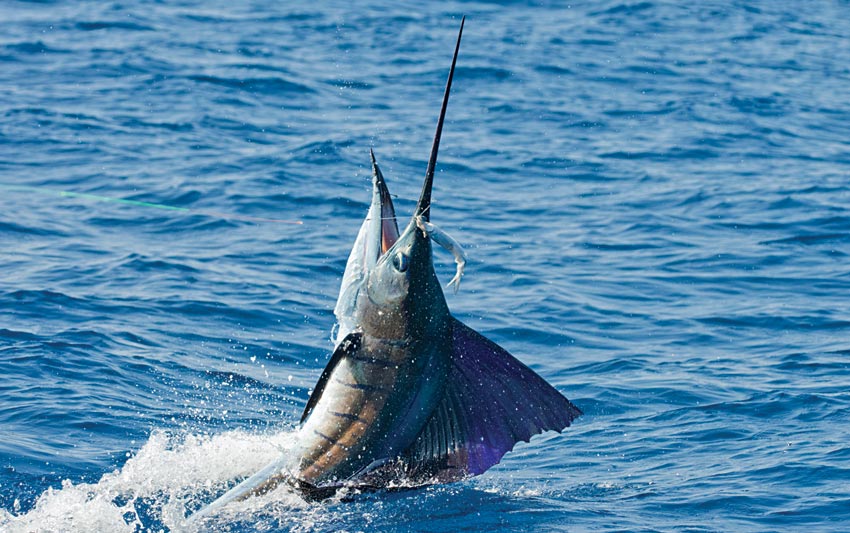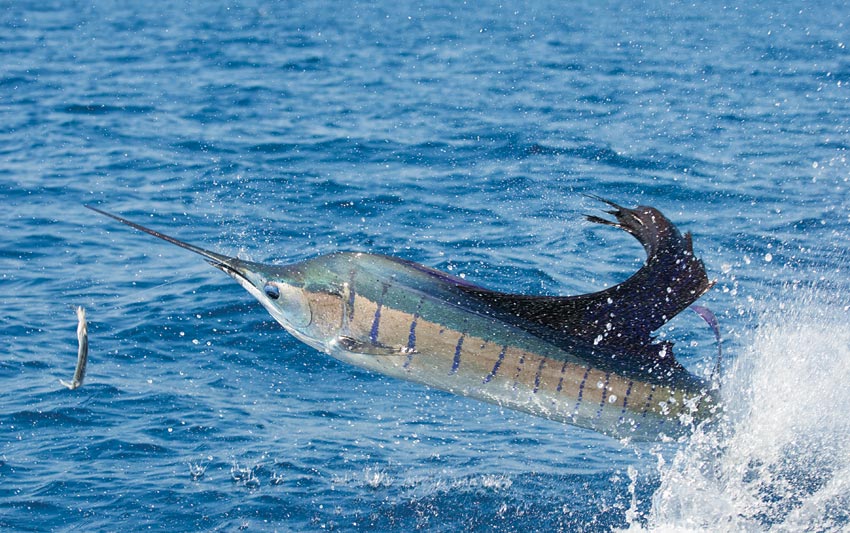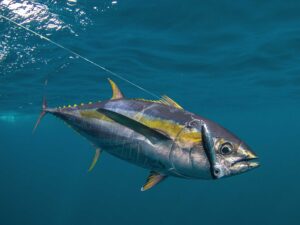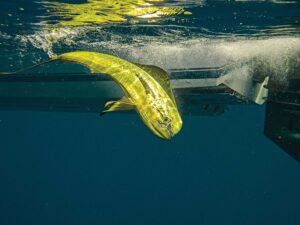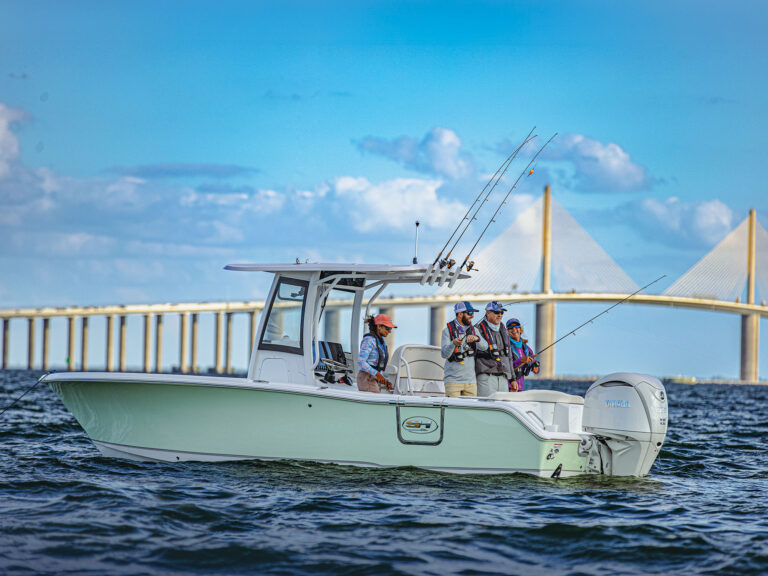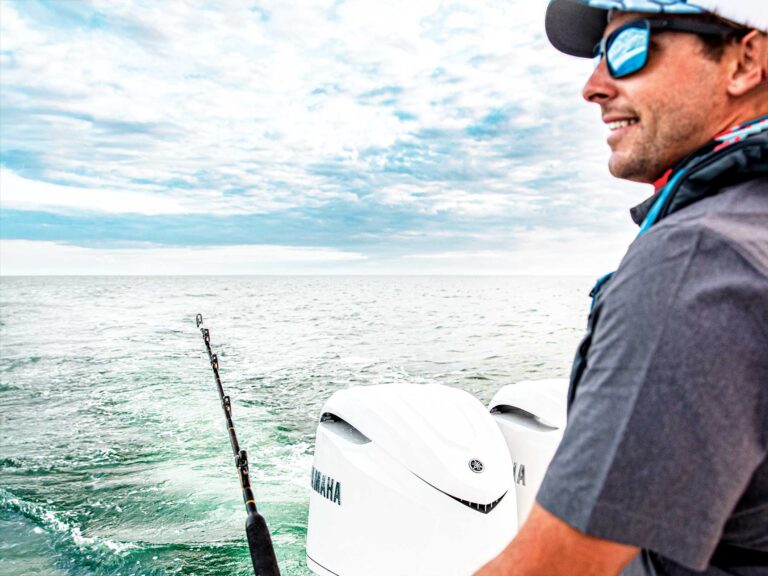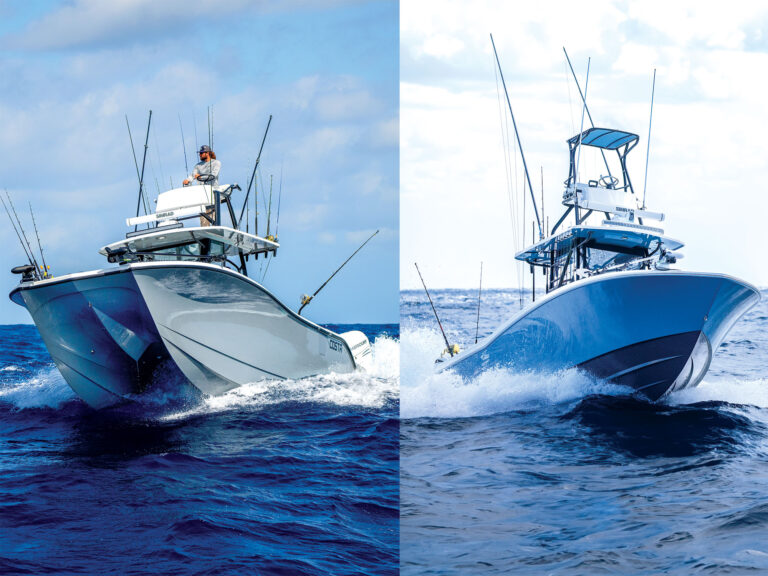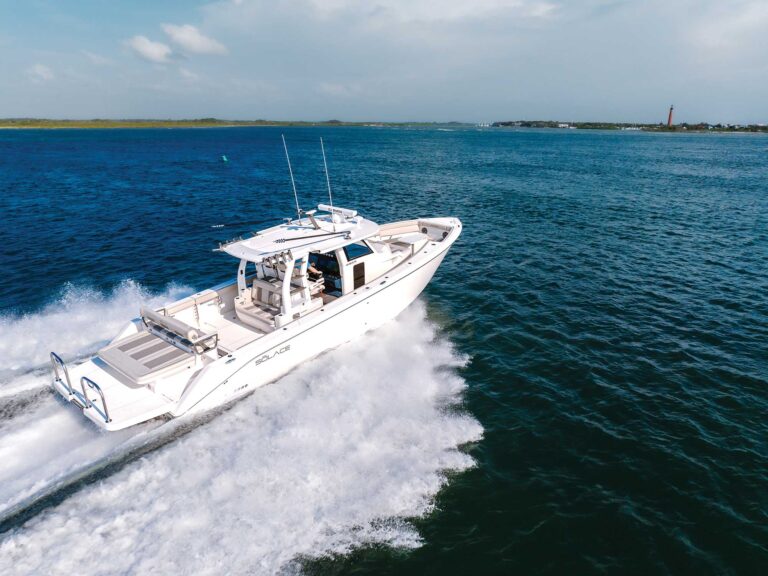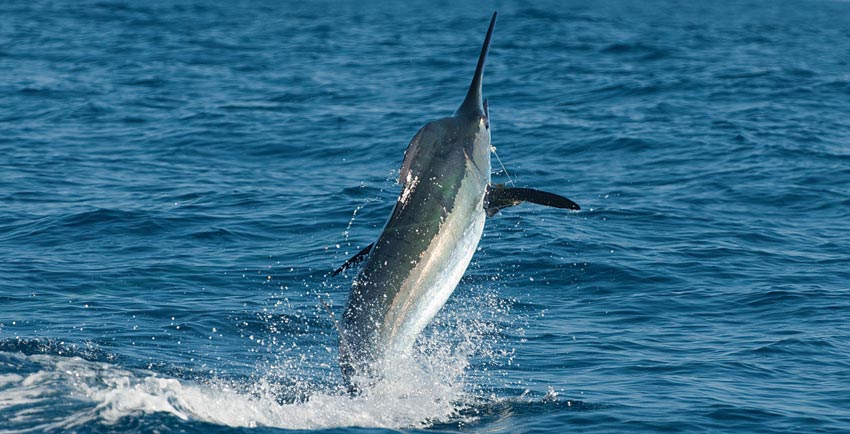
Watching a billfish rise to a hookless teaser ranks as one of the most exciting experiences in fishing; I never tire of it. Bait-and-switch fishing offers the utmost flexibility, since you can choose your weapon accordingly once you see what species comes up and how big it is. In the Pacific Ocean, most crews rig 30-pound conventional outfits for sailfish, with a 50 standing by in case a marlin makes an appearance, but when a fish pops up in the spread, it’s totally up to you; drop back a standard 30-pound rig, or if you’re adventurous, try to hook it on 2-pound-test. Like fly-fishing? The bait-and-switch offers the ultimate shot at catching a sailfish or marlin on a fly rod.
The real beauty of the bait-and-switch is that you can use it to hook a fish on any tackle you want. Last spring I traveled to Carrillo, located on the Pacific coast of Costa Rica on the Nicoya Peninsula, to try the bait-and-switch once more. My friend Russ Nelson and I teamed up with Capt. Sonny Kocsis on his 31 Bertram charter boat, named WetAss II, and on our first morning out, we found what we had come for. Only a few minutes after the spread was deployed, a large, dark shape rose behind the long right teaser.
Kocsis’ young mates both yelled “marlin!” at the same time, and Nelson grabbed the rod that had a small tuna rigged to a large circle hook. He free-spooled the tuna back into the wake as Kocsis brought the teasers toward the boat, and for a moment, the marlin disappeared, although we all knew it was still there somewhere.
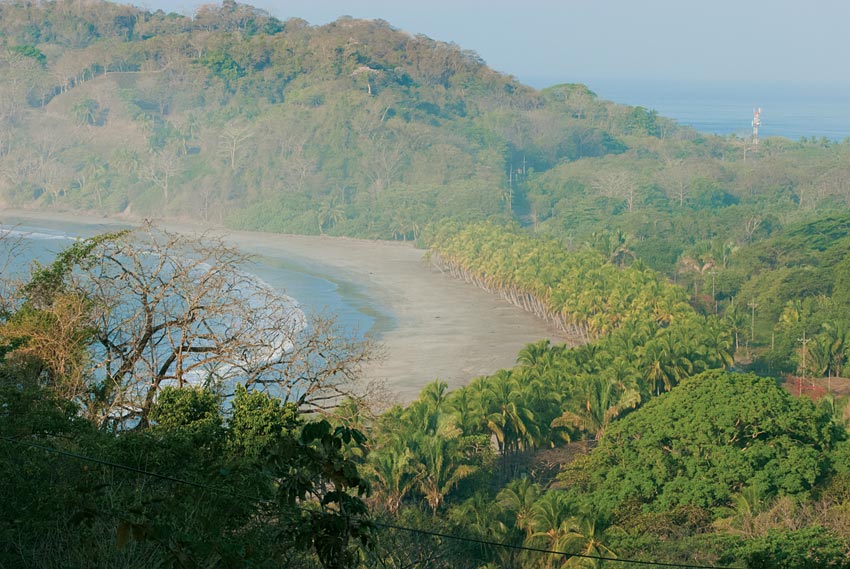
The fish rose suddenly about 30 feet behind the transom, engulfing the bait in a massive boil, and Nelson dropped back for a few seconds before hammering the lever drag to strike. The fight was on as the lit-up blue raced across the horizon. The bite is everything in this type of fishing, and this was as spectacular a take as I’d ever seen.
The marlin tired relatively quickly after its jumping display, and in short order, Nelson had it boat-side, where the mates took a couple of wraps on the leader and cut it free. The fish swam off in great shape, and we set off in search of another as the crew reset the spread with a fresh bait on the marlin rod.
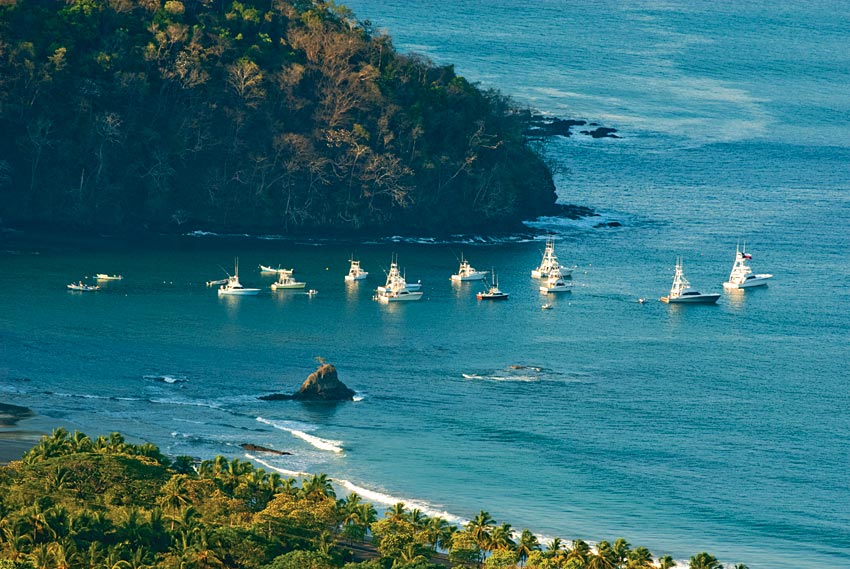
Productive Spread
Kocsis fishes a standard bait-and-switch pattern with a few personal touches of his own thrown in. “I like the Mold Craft 4-Eyed Monster lures on my short teasers,” Kocsis says. “I’ve been using them for years, and they really raise fish. We use Mold Craft Wide Range lures on the long teasers and fish a naked ballyhoo rigged on a circle hook down the middle on a shotgun line.”
In a departure from the norm, Kocsis fishes 30-pound-test for everything on most days. “It’s hard for a lot of people to handle 50-pound stand-up gear,” he explains, “and having a smaller, highly maneuverable boat like my 31 Bertram, we can stay on top of marlin on 30-pound and catch them pretty quick.” Kocsis sometimes spools a 30-pound outfit with 40-pound-test mono as a marlin rod for a little extra advantage.
Depending on how hot the bite is on a given day, Kocsis will fish as many as three hook baits, all ballyhoo on circle hooks. He always fishes the shotgun line down the middle but will add one or two long rigger baits when things slow down a little, positioning them to ride just behind the long teasers, which are pulled from the bridge.
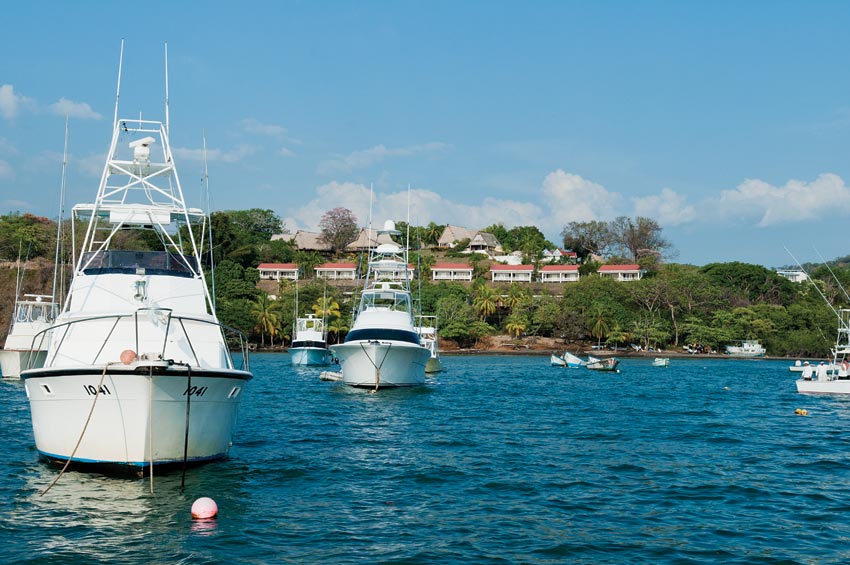
Perfect Geography
Carrillo makes a great base of operations for several reasons. It’s a well-protected bay where boats can ride on moorings in relative safety from the open ocean, but more importantly, it lies squarely in the migration path of every pelagic species that travels the Pacific Ocean along the Central American coastline.
Located between the well-known Costa Rican fishing destinations of Flamingo and Los Suenos, Carrillo provides excellent fishing most of the year. “We have great fishing year-round,” Kocsis says, “but the prime season is considered December through April. My favorite time is the first two weeks of May, though. That’s when the marlin come through here in incredible numbers most years.”
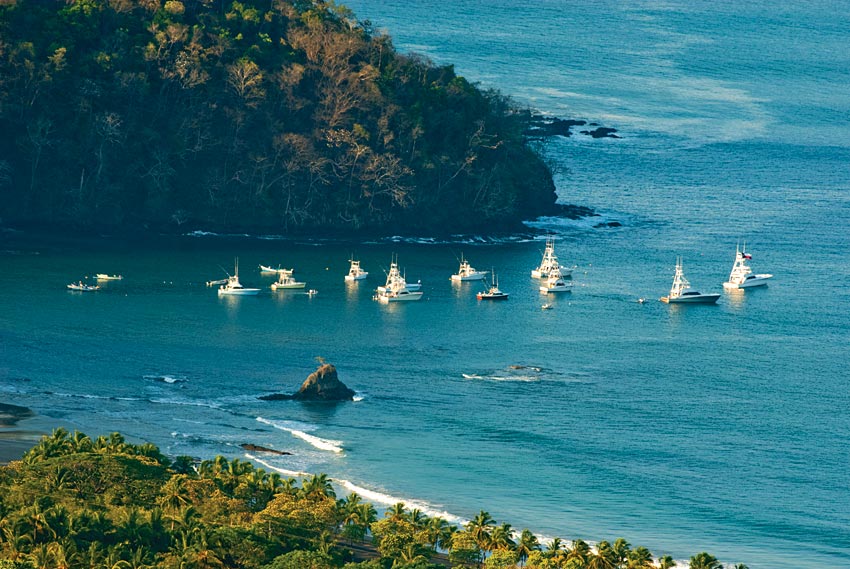
Situated between two better-known hot spots, Carrillo-based captains have a decided advantage, since they can get reports from skippers to the north and south for a definitive sense of where the fish are and which way they may be moving and then adjust their game plan accordingly.
On most days, however, all these captains need do is run right out front of Bahia Carrillo. The afternoon after Nelson caught and released his blue marlin, we raised four sailfish and caught two. We had numerous shots at sails after that, releasing quite a few each day, and we also had terrific action with large dorado, which made for some great dinners.
Kocsis and his crew put us on fish every day, and although it might seem like bait-and-switch fishing is easy, it’s not always so. We all enjoyed the challenge and excitement of dropping back to one sailfish after another, of fighting big dorado and of watching the incredible acrobatics that inevitably took place when we did manage to hook a fish.
All of these things are part and parcel of the exceptional fishing found in Costa Rica. It’s what keeps many of us returning here again and again, looking for the next billfish to rise.
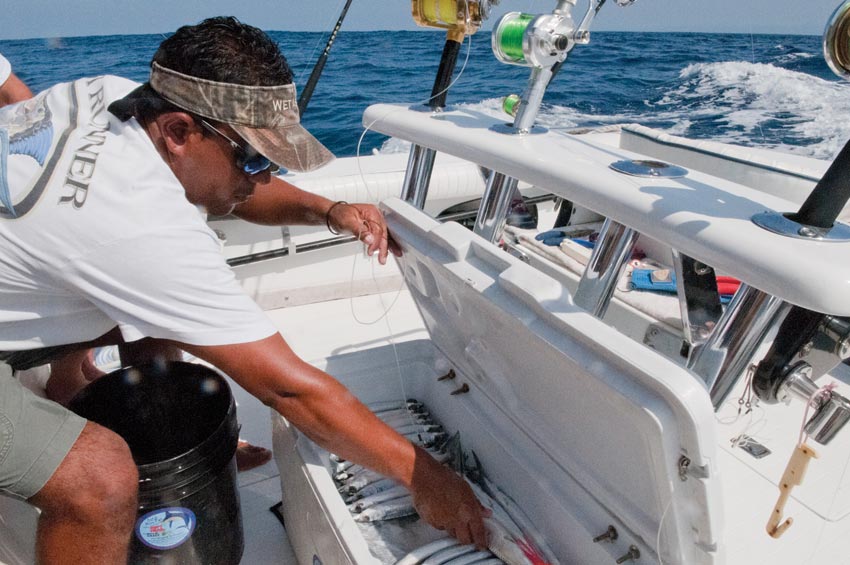
TRIP PLANNER
Rods and Reels: 30-pound conventional tackle for sailfish and marlin, or 50-pound for marlin should you choose to go heavier. With bait-and-switch tactics, you can actually use any tackle you desire, from ultra-light conventional gear to fly tackle.
Baits: Naked medium ballyhoo on 6/0 to 8/0 circle hooks for sailfish or small striped marlin. Small sewn tuna baits bridled to 10/0 or larger circle hooks for dropping back to blue, black or large striped marlin.
Lures: Mold Craft 4-Eyed Monster and Wide Range lures rigged hookless as teasers.
Terminal tackle: 80- to 100-pound-test nylon monofilament for leaders on sailfish, 250-pound mono for marlin.
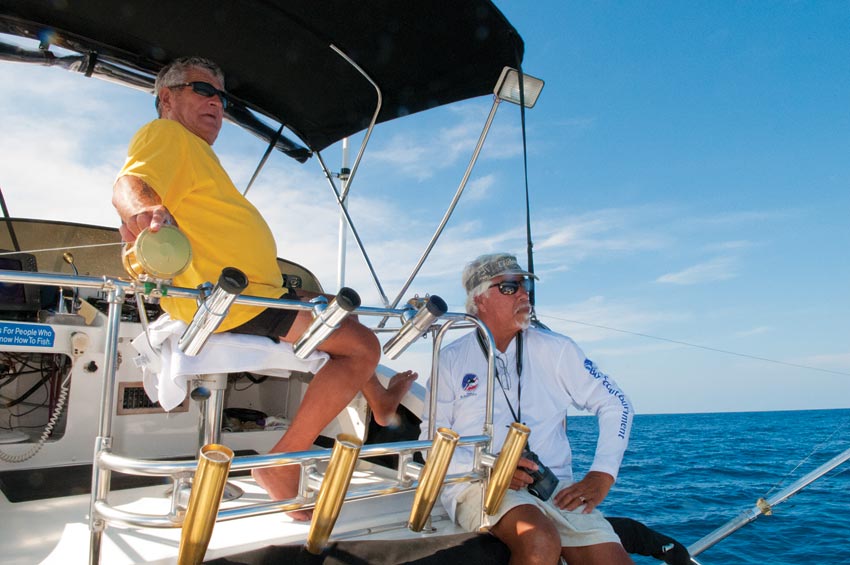
There are plenty of upscale lodgings available in Carrillo and nearby Samara; the PCCA tournament was based at the Hotel Villas Playa Samara. The area can now be reached easily from the new international airport in Liberia, only a short ride from the coast. Liberia has fewer incoming flights from the United States each day than does the Costa Rican capital of San Jose, but its proximity to Carrillo makes it worthy of consideration. Liberia is a one-hour-and-45-minute car ride away from Carrillo, while the drive from San Jose takes 312 to four hours.
What: Offshore fishing for sailfish, dorado, wahoo, tuna, and blue, black and striped marlin.
Where: Carrillo, Costa Rica, on the Pacific coast of the Nicoya Peninsula.
When: Year-round, with a hot marlin bite the first two weeks of May, but the prime season is December through April.
